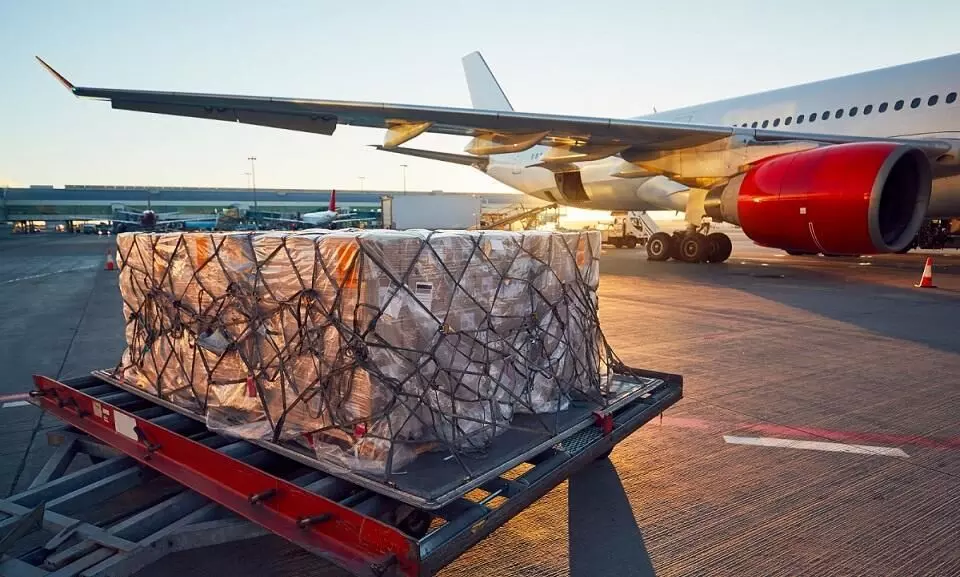
Air cargo closes 2022 near pre-pandemic levels
December saw a softening in performance: global demand was 15.3% below 2021 levels (-15.8% for intl operations)

Global full-year demand in 2022, measured in cargo tonne-kilometres (CTKs), was down only 1.6 percent (both global and international) compared to 2019, according to the latest update from the International Air Transport Association (IATA). CTKs were down 8 percent year-on-year (-8.2 percent for international operations).
"Capacity in 2022, measured in available cargo tonne-kilometres (ACTKs), was 3 percent above 2021 (+4.5 percent for international operations). Compared to 2019 (pre-Covid) levels, capacity declined 8.2 percent (-9 percent for international operations)."
December saw a softening in performance: global demand was 15.3 percent below 2021 levels (-15.8 percent for international operations). "Monthly cargo demand tracked below 2021 levels from March 2022. Global capacity was 2.2 percent below 2021 levels (‑0.5 percent for international operations). This was the tenth consecutive monthly contraction compared to the 2021 performance."
Willie Walsh, Director General, IATA
Willie Walsh, Director General, IATA says: “In the face of significant political and economic uncertainties, air cargo performance declined compared to the extraordinary levels of 2021. That brought air cargo demand to 1.6 percent below 2019 (pre-pandemic) levels. The continuing measures by key governments to fight inflation by cooling economies are expected to result in a further decline in cargo volumes in 2023 to -5.6 percent compared to 2019. It will, however, take time for these measures to bite into cargo rates. So, the good news for air cargo is that average yields and total revenue for 2023 should remain well above what they were pre-pandemic. That should provide some respite in what is likely to be a challenging trading environment in the year ahead."
2022 regional performance
Asia-Pacific airlines posted an 8.8 percent decrease in demand in 2022 compared to 2021 (-7.4 percent for international operations) and a capacity increase of 0.5 percent (+5.8 percent for international operations). Compared to 2019, demand was 7.8 percent below and capacity was down 17.2 percent.
North American carriers reported a 5.1 percent decrease in demand in 2022 compared to 2021 (-6.3 percent for international operations) and a capacity increase of 4.2 percent (+4.9 percent for international operations). Compared to 2019, demand was 13.7 percent above and capacity was up 8.2 percent.
European carriers posted the worst year-on-year performance of all regions with a 11.5 percent decrease in demand in 2022 compared to 2021. During the same period, airlines posted a capacity increase of 0.5 percent for both global and international operations. Compared to 2019, demand was 8.7 percent below and capacity was down 16.5 percent.
Middle Eastern carriers reported a decrease of 10.7 percent for global and international demand in 2022 compared to 2021 and an increase in capacity of 4.3 percent. Compared to 2019, demand was 1.6 percent below for global and international operations and capacity was down 6.3 percent (-6.1 percent for international operations).
Latin American carriers posted the strongest year-on-year performance of all regions with a 13.1 percent increase in demand in 2022 compared to 2021 (+15 percent for international operations). Airlines posted a capacity increase of 27.1 percent (+27.8 percent for international operations). Compared to 2019, demand was 4.3 percent below and capacity was down 14.3 percent.
African airlines reported a decrease in demand of 1.4 percent for global and international demand in 2022 compared to 2021 and an increase in capacity of 0.3 percent. Compared to 2019, demand was 8.3 percent above and capacity was down 15.3 percent.

